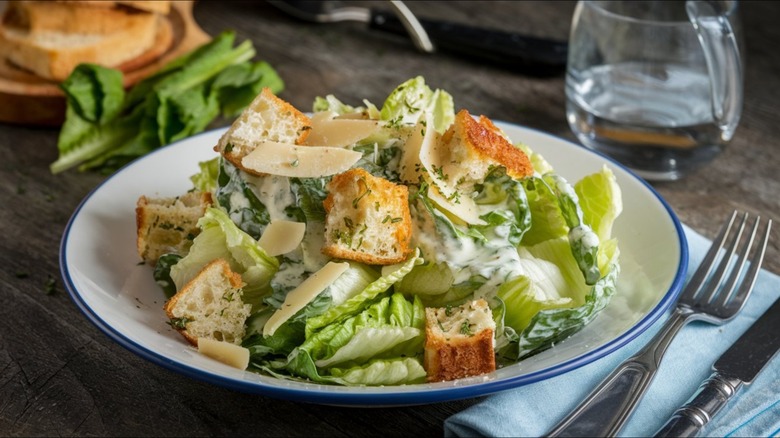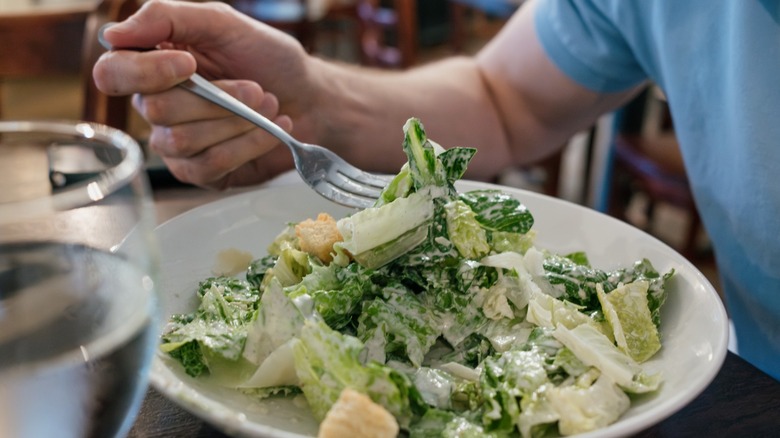Not Italy Or America: Here's Where The Caesar Salad Was Actually Invented
If you've ever been offered a choice between a house or Caesar salad at a restaurant and chosen the latter, it's possible that, at least once, you spared a thought for the origins of this delicious green side — which is rich enough for a main dish if you add some protein. Caesar salad is seen often on Italian restaurant menus, the ingredients seem Italian-ish, and the name Caesar conjures images of a Roman emperor. You could be forgiven for thinking it came from Italy ... but you would be wrong. A lot of foods that aren't actually Italian are American in origin, but Caesar salad isn't a Yank invention, either. Actually, the salad, with its signature dressing and use of romaine lettuce and croutons, was born in Tijuana, Mexico, over a century ago.
As the story goes, in 1924, America was in the throes of Prohibition, so restaurant owner Cesare Cardini moved his family and business south of the border so that he could continue to imbibe and serve alcohol without fear of legal trouble. One night, having run out of ingredients for his mixed salad, he combined a few pantry staples into a new type of dressing and slathered it on romaine leaves. There's a Caesar salad fish swap that subs sardines, but a classic Caesar dressing uses anchovies, along with raw egg, Worcestershire sauce, lemon juice, and plenty of olive oil, among other seasonings. Cesare's piquant salad was a hit, and he chose to name it the Caesar as a spin-off on his own name.
How has the Caesar salad changed over the last century?
Cardini's Caesar salad has a lot of flavor similarities with the dish you order in a restaurant today, but the presentation is likely different. At Hotel Caesar in Tijuana today, the making of the Caesar salad is typically a tableside affair, where the dressing is mixed with great ceremony and layered atop whole romaine leaves. Croutons are mostly an afterthought. Just as is the case with Bobby Flay's salad dressing hack, most of the leaf ends up covered thoroughly in the dressing, which is the star of the plate.
Today, a typical Caesar you see in the wild likely uses torn or shredded romaine lettuce, not the whole leaf. A salad with iceberg lettuce is not a true Caesar, as the limp, wimpy greens simply don't stand up to the thick dressing; nor are froufrou alternatives like kale acceptable. The anchovy in Caesar dressing can be a divisive ingredient, even if you aren't avoiding animal products, so some recipes pass it over — a mistake, in our opinion, because you are giving up critical umami flair. The added Parmesan cheese and croutons on top are often given much higher billing than they ever would receive in Tijuana. Modern-day food safety concerns sometimes also preempt the use of raw egg in the dressing, so some folks use mayonnaise to create the emulsion instead. And though bottled Caesar dressing may lessen your concerns over some of the ingredients, it will obviously never taste quite as fresh.

